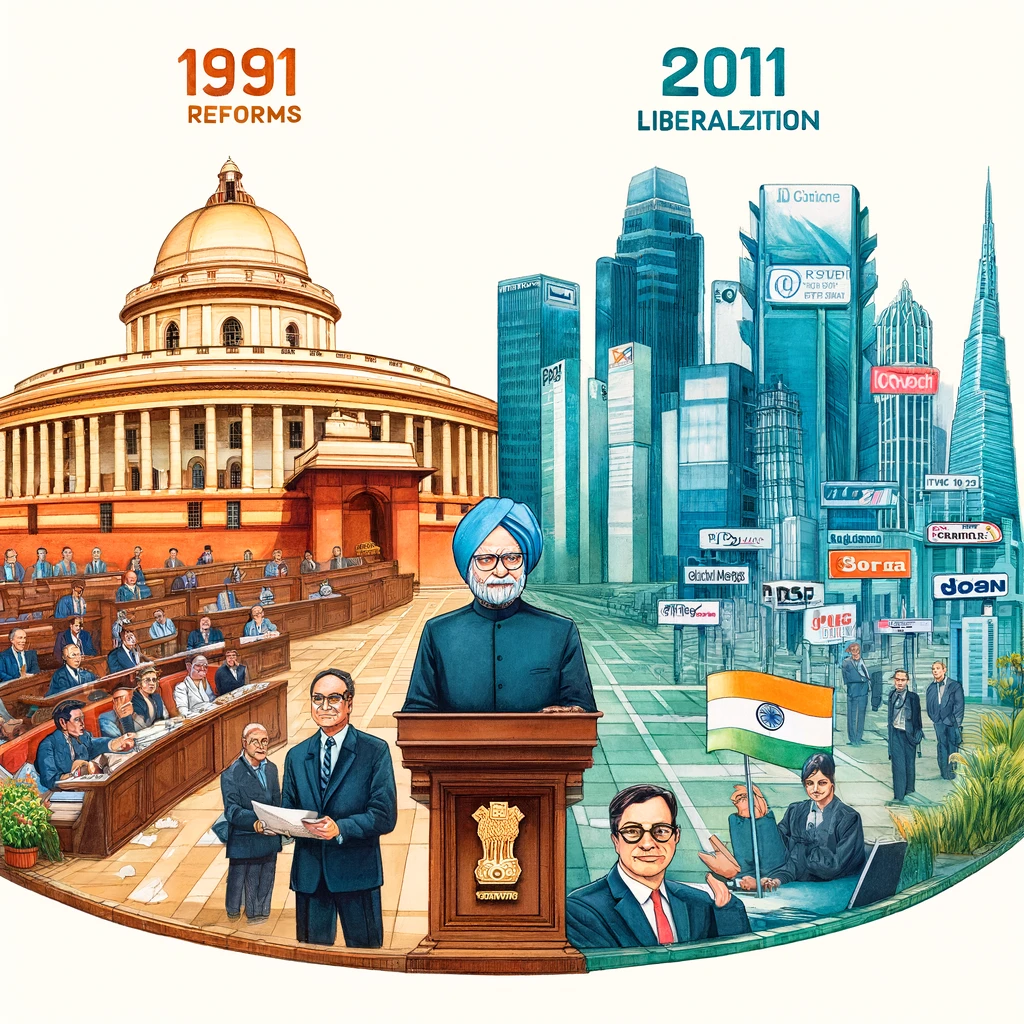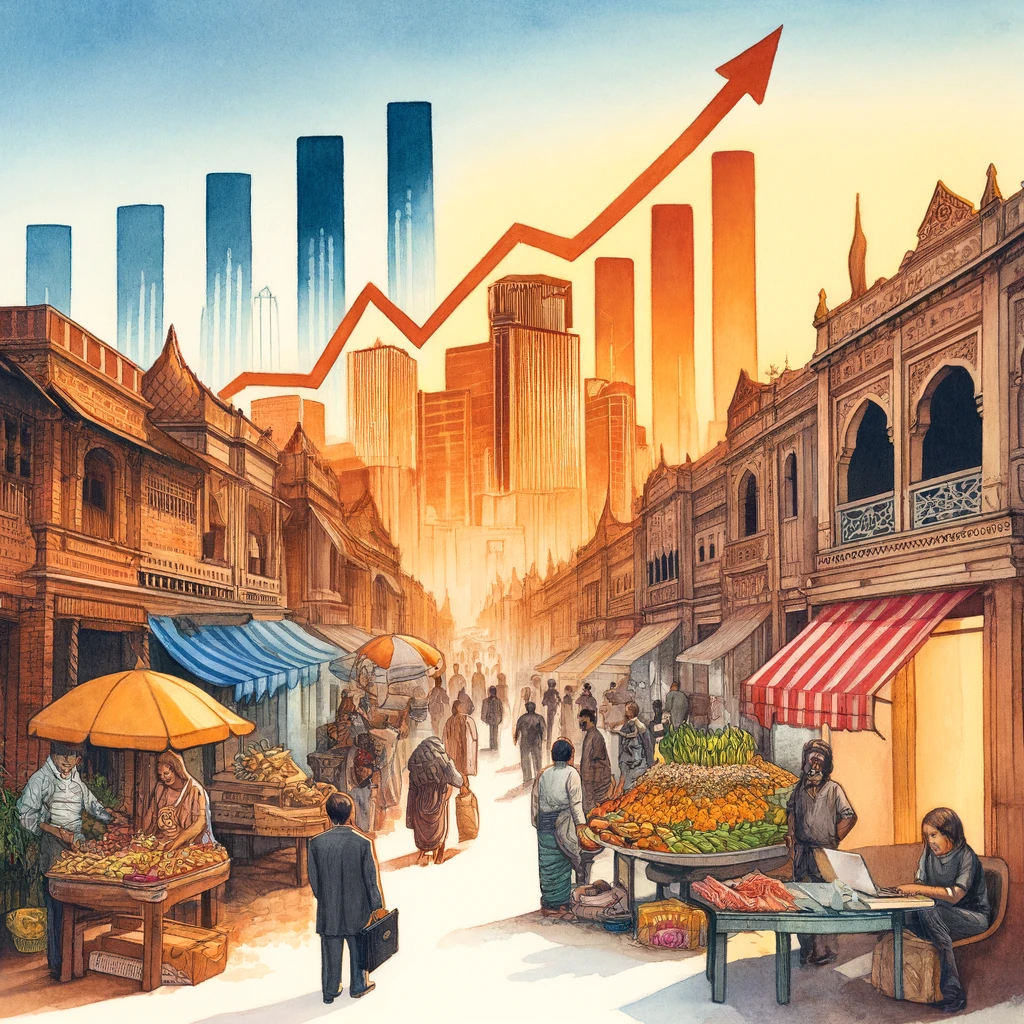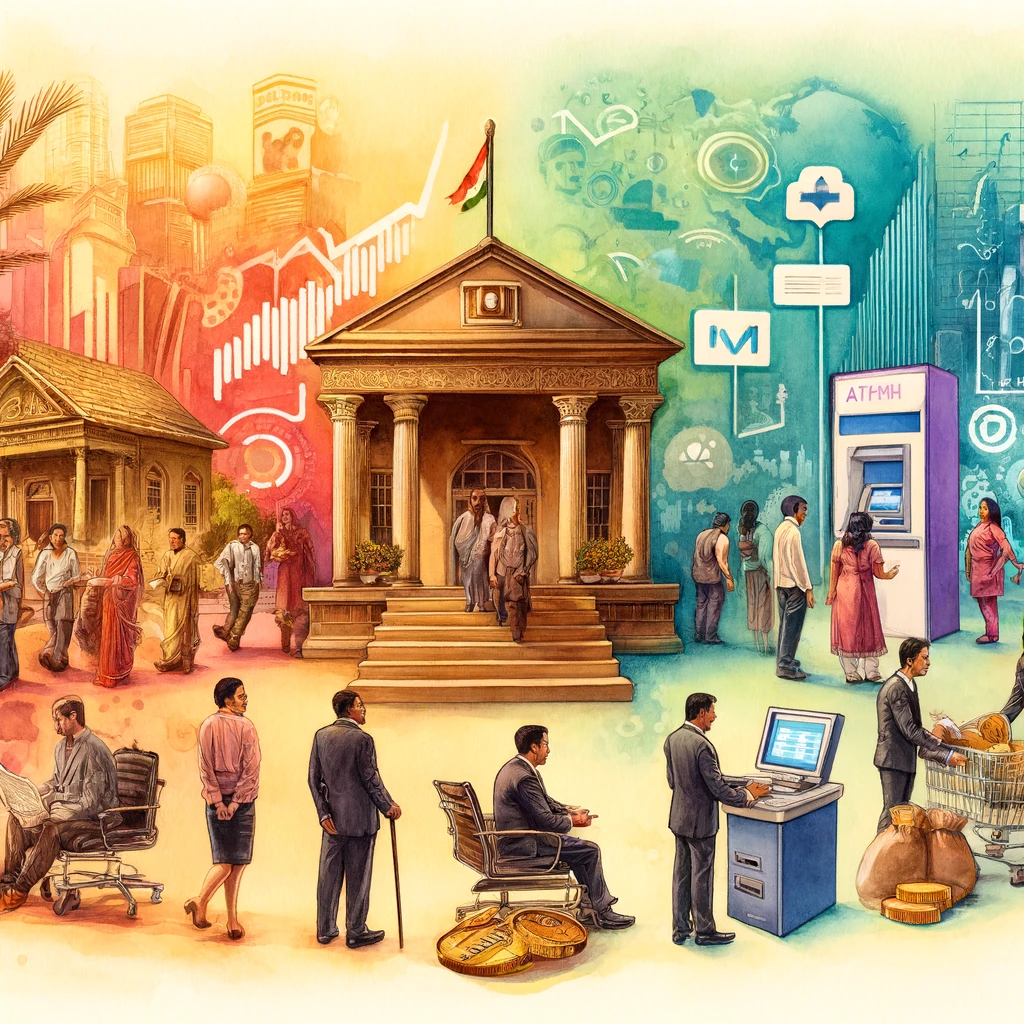Economic Liberalization in India refers to the massive economic reforms that had been set up in India in 1991 to redefine its economic landscape. It worked on reducing government control, promoting the growth of the private sector, and liberalizing the economy of the country to global markets. The prime objective is to enhance economic growth and make India a sound player in the economy globally. The significant features of Economic Liberalization in India:
- Import tariffs were lowered, and foreign investment was promoted to facilitate greater trade and growth.
- Increasing efficiency and productivity in sectors through the privatization of state-owned enterprises.
- Industry deregulation such that the private sector has more leeway to operate and innovate.
Background and Need for Economic Liberalization
It was in 1991 when economic liberalization policies were introduced to counter stagnation in the economy, high fiscal deficits, and foreign exchange crises with the aim of boosting growth, attracting investment, and making the economy modern.
Pre-1991 Economic Scenario
Before 1991, India’s economy was characterized by a mixed economic model with extensive state control over key sectors, high levels of protectionism, and a focus on import substitution. The government maintained tight control over industries through licensing, regulation, and public sector monopolies. This approach led to several challenges:
- Inefficiency: Excessive regulation and bureaucracy stifled innovation and efficiency in the industrial sector.
- Slow Growth: The annual GDP growth rate averaged around 3.5%, often referred to as the “Hindu rate of growth,” which was insufficient to meet the needs of a growing population.
- Fiscal Imbalance: High fiscal deficits and mounting public debt strained government finances.
- Foreign Exchange Crisis: By 1990, India faced a severe balance of payments crisis, with foreign exchange reserves barely sufficient to cover three weeks of imports.
Necessity for Reforms
The dire economic situation necessitated immediate and comprehensive reforms. The government, led by Prime Minister P.V. Narasimha Rao and Finance Minister Dr. Manmohan Singh, recognized the need to open up the economy, deregulate industries, and integrate with the global market to stimulate growth and development.

Key Reforms Introduced in 1991
The reforms of 1991 focused the attention on reducing the power of the government; promoting privatization, and de-regulation of industries; and inviting foreign investment so that growth could be stimulated by integration into the world economy. The economic reforms of 1991 marked a paradigm shift in India’s economic policy. Key reforms included:
Deregulation
- Industrial Licensing Policy: Abolishment of industrial licensing for most sectors, except a few critical industries related to security, public health, and environmental protection.
- Public Sector Reforms: Reduction in the number of industries reserved for the public sector, encouraging private sector participation and competition.
Trade Liberalization
- Reduction of Tariffs: Gradual reduction of customs duties and dismantling of quantitative restrictions on imports to promote competition and efficiency.
- Export Promotion: Incentives and support for export-oriented industries to enhance foreign exchange earnings.
Financial Sector Reforms
- Banking Reforms: Deregulation of interest rates, reduction of statutory liquidity ratios (SLR), and capital adequacy norms to improve the efficiency and profitability of banks.
- Capital Market Reforms: Establishment of the Securities and Exchange Board of India (SEBI) to regulate and develop capital markets, introduction of electronic trading, and dematerialization of shares.
Fiscal Reforms
- Tax Reforms: Simplification of the tax structure, broadening of the tax base, and reduction of tax rates to improve compliance and revenue collection.
- Expenditure Reforms: Rationalization of subsidies and reduction in public expenditure to contain fiscal deficits.
Investment Policy
- Foreign Direct Investment (FDI): Liberalization of FDI policies to attract foreign investment, including allowing 100% FDI in certain sectors and automatic approval routes for others.
- Disinvestment: Initiation of disinvestment in public sector enterprises to raise resources and improve efficiency.

Impact on Various Sectors
The Economic Liberalization in India had an intensive impact on the entire value chain of the industry, finance, trade and increased competition, foreign investment, efficiency, and integration with the world at large in the said sectors.
Industry
- Growth and Modernization: Deregulation and competition improved efficiency, modernized industries, and productivity. Automobiles, pharmaceuticals, and consumer goods sectors are examples that grew rapidly.
- Foreign Investment: Liberal FDI policies ensured the transfer of huge foreign investments into the country by capital, technology, and management practices.
Agriculture
- Mixed Outcomes: While some positive impacts were observed, such as improved access to global markets and better prices for export-oriented crops, the sector faced challenges due to inadequate infrastructure and slow policy reforms.
- Green Revolution: Continued support for the Green Revolution technologies helped increase productivity, but disparities remained in different regions.
Services
- Boom in IT and ITES: The liberalization era saw the rapid growth of the IT and ITES sector, making India a global hub for software services and business process outsourcing.
- Tourism and Hospitality: Increased foreign investment and improved infrastructure boosted tourism and hospitality sectors, contributing to economic growth and employment.
Long-term Economic Impacts and Challenges
India’s economic liberalization has generated long-term growth, greater inflows of foreign investment, and higher quality infrastructure. But the high Gini coefficient of income inequality, pockets of unemployment and other regional imbalances are some areas that require sustained reform to generate effective and efficient development.
Impacts
- High Growth Rates: Post-liberalization, India experienced high GDP growth rates, averaging around 7% annually, lifting millions out of poverty and improving living standards.
- Global Integration: India’s integration into the global economy enhanced trade, investment, and technological advancements, positioning it as a major emerging market.
- Diverse Economy: The economy diversified, with significant contributions from industry, services, and agriculture, reducing dependency on any single sector.
Challenges
- Income Inequality: Economic growth led to increased income disparities, with benefits not evenly distributed across different regions and social groups.
- Infrastructure Deficits: Despite progress, infrastructure development lagged behind, impacting industrial growth and overall economic efficiency.
- Regulatory Hurdles: Complex regulatory frameworks and bureaucratic inefficiencies continued to pose challenges for businesses and investors.
- Environmental Concerns: Rapid industrialization and urbanization raised environmental sustainability issues, necessitating stringent regulatory measures.
Future Directions for Economic Reforms
For the future, economic reforms in India should relate to developing digital infrastructure, developing green energy sources, and labor laws, and bringing equality in income distribution so that the country grows sustainably and becomes more competitive at a fast pace in the economy.
Enhancing Infrastructure
- Investment in Infrastructure: Continued focus on developing transportation, power, and digital infrastructure to support economic activities.
- Public-Private Partnerships (PPPs): Encouraging PPPs to mobilize private sector resources and expertise for infrastructure projects.
Promoting Inclusive Growth
- Agricultural Reforms: Implementing comprehensive agricultural reforms to enhance productivity, ensure fair prices, and improve rural livelihoods.
- Skill Development: Expanding skill development programs to equip the workforce with necessary skills for emerging sectors.
Strengthening Regulatory Framework
- Simplifying Regulations: Streamlining regulatory procedures and enhancing transparency to create a more business-friendly environment.
- Strengthening Institutions: Improving the capacity and effectiveness of regulatory institutions to ensure fair competition and protect consumer interests.
Environmental Sustainability
- Green Technologies: Promoting the adoption of green technologies and sustainable practices in industries and agriculture.
- Regulatory Measures: Implementing stringent environmental regulations to balance economic growth with ecological preservation.
Financial Sector Reforms
- Deepening Financial Markets: Enhancing the depth and breadth of financial markets to provide better access to capital for businesses.
- Inclusion: Expanding financial inclusion initiatives to ensure broader access to banking and financial services for underserved populations.
Conclusion
The economic liberalization of 1991 marked a turning point in India’s economic history, unleashing a wave of growth and development. While the reforms brought significant benefits, challenges remain. By addressing these challenges through targeted reforms and strategic investments, India can continue its journey towards sustainable and inclusive growth, solidifying its position as a major global economy.
| Economic Liberalization in India UPSC Notes |
| 1. Economic liberalization in India began in 1991, marking a shift from a closed economy to a more market-driven one. 2. The reforms included reducing import tariffs, deregulating markets, and reducing taxes, fostering foreign direct investment (FDI). 3. Privatization of public sector enterprises became a focus to improve efficiency and reduce the government’s financial burden. 4. The reforms led to significant growth in GDP, with India’s economy accelerating from a slow growth rate to becoming one of the fastest-growing economies globally. 5. Financial sector reforms, including the deregulation of interest rates, helped boost investment and credit availability in the economy. 6. India saw an increase in FDI inflows and global integration, enabling Indian companies to compete on an international scale. 7. The liberalization efforts enhanced sectors like IT and telecommunications, contributing to India’s emergence as a global technology hub. 8. Challenges remain, including inequality and unemployment, necessitating ongoing reforms to ensure inclusive growth. |



